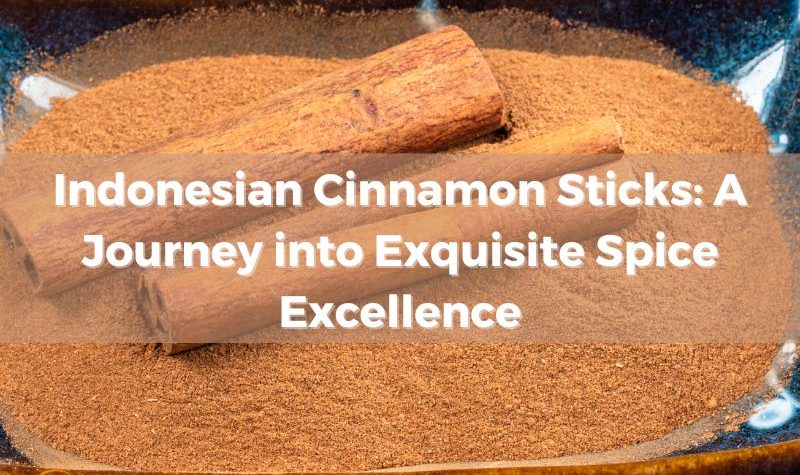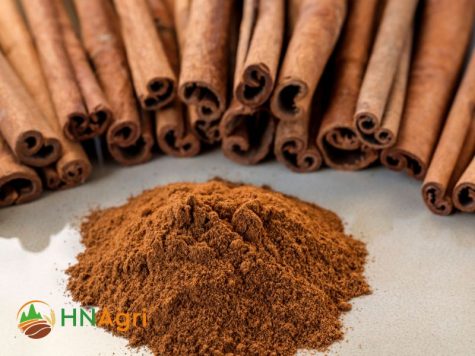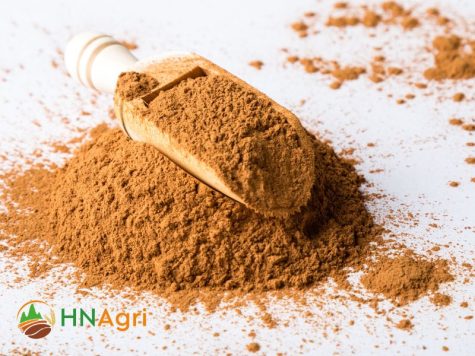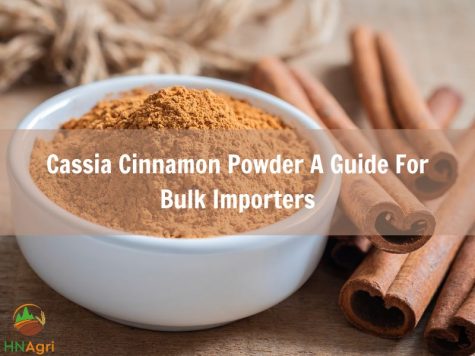Delve into the world of Indonesian Cinnamon Sticks with our exclusive guide crafted for wholesalers. Embark on a journey of spice excellence as we unveil sourcing secrets and showcase the unmatched quality of Indonesian cinnamon. Elevate your wholesale offerings with this exquisite and sought-after spice.
Mục Lục
Indonesian Cinnamon Sticks: A Journey into Exquisite Spice Excellence
Indonesian cinnamon sticks, also known as Cassia cinnamon sticks, are a type of spice derived from the bark of the Cinnamomum cassia tree. These cinnamon sticks are a popular ingredient in culinary and cultural practices.
Indonesian cinnamon sticks: A journey into exquisite spice excellence
Indonesian cinnamon sticks, or “Cassia cinnamon,” are famous for their flavor and aroma. Cassia cinnamon is a close relative of “true” cinnamon (Cinnamomum verum), but it has distinct qualities.
- Origin and Cultivation: Indonesian cinnamon comes from the bark of the Cinnamomum cassia tree, native to Indonesia, Vietnam, and China. This spice has been part of Indonesian culture and cuisine for centuries. It grows in tropical climates with well-draining soil and lots of sunlight.
- Appearance: Compared to true cinnamon, top quality cinnamon sticks of Indonesia are thick and coarse and reddish-brown to dark brown. The sticks are rolled cinnamon bark layers that are easily recognizable.
- Flavor and scent: Indonesian cinnamon is popular in cooking because of its intense, warm, and slightly sweet flavor. Its rich, inviting aroma of spice and woodiness enhances any dish.
- Usages in food: Indonesian cinnamon sticks are used in sweet and savory dishes. To infuse stews, curries, and rice dishes with flavor, they are often cooked whole. The sticks flavor spiced teas and mulled wines.
- Global kitchens use Indonesian cinnamon in addition to traditional Indonesian cuisine. Baking pastries, cookies, cakes, and desserts with it is popular. The comforting scent of Indonesian cinnamon gives these treats depth and complexity.
- Benefits of Health: Health benefits of cinnamon, including Indonesian cinnamon, are numerous. It contains antioxidant and anti-inflammatory cinnamaldehyde. Cinnamon has been studied for blood sugar management and insulin sensitivity. Cinnamon can add flavor and benefit to a balanced diet, but it’s not a substitute for medical treatment or professional advice.
- Cultural Importance: In various cultures, cinnamon is used in rituals, perfumes, and traditional medicines. Cassia cinnamon is revered in Indonesian cuisine and culture.
Indonesian cinnamon sticks demonstrate the diversity of flavors and culinary exploration across regions. Their tree-to-table journey showcases nature, culture, and culinary art. Whether you’re a professional chef or a home cook, Indonesian cinnamon can elevate your dishes to spice perfection.

Indonesian cinnamon sticks A journey into exquisite spice excellence
Detail the meticulous cultivation and harvesting process of Indonesian
The cultivation and harvesting process of Indonesian cinnamon involves several meticulous steps to ensure the highest quality of the spice. Here’s an overview of the process:
- Selecting the Planting Area: Cinnamon trees thrive in tropical climates with well-draining soil and ample sunlight. The ideal regions for cultivation are parts of Indonesia, China, and Vietnam. Planting areas are chosen based on these climatic conditions.
- Propagation and Planting: Cinnamon trees are typically propagated through seeds or cuttings. Seeds are sown in nurseries and nurtured until they develop into young saplings. Once the saplings are strong enough, they are transplanted to the field. This process can take several months.
- Cultivation and Maintenance: Cinnamon trees require regular care and attention. They need consistent watering, proper nutrition, and protection from pests and diseases. Regular pruning and maintenance help promote healthy growth and ensure higher yields.
- Bark Harvesting: The most valuable part of the cinnamon tree is its bark. The bark is harvested when the tree is around two to three years old. Skilled workers use specialized tools to carefully peel off the outer bark in long strips. The inner bark, which contains the flavorful compounds, remains intact.
- Processing the Bark: After harvesting, the bark is carefully collected and sorted. It is then left to dry, during which it curls into the familiar cinnamon sticks as it loses moisture. The dried bark is cut into uniform-sized sticks, and any impurities or rough edges are removed.
- Quality Control: Quality control is a crucial step to ensure that only the best cinnamon sticks are packed for distribution. The sticks are inspected for color, aroma, and overall appearance. Any sticks that do not meet the desired standards are set aside.
- Packaging and Distribution: Once the cinnamon sticks have been sorted and inspected, they are packaged in appropriate containers, such as bags or boxes, to preserve their freshness and flavor. They are then ready for distribution to local markets or international buyers.
- Culinary and Industrial Use: Indonesian cinnamon sticks are used in various culinary dishes, beverages, and baked goods. They can be sold whole or ground into a fine powder, depending on their intended use. The spice industry also utilizes cinnamon for its essential oil, which is extracted from the bark and used in perfumes, cosmetics, and aromatherapy.
In summary, the cultivation and harvesting of Indonesian cinnamon involve a careful balance of agricultural expertise and traditional techniques. From selecting the right planting area to processing the bark and ensuring quality, every step is essential in producing the exquisite cinnamon sticks that are beloved for their flavor and aroma cinnamon.
Indonesian cinnamon sticks uses in culinary and industry applications
Indonesian cinnamon sticks, also known as Cassia cinnamon sticks, have a wide range of culinary and industrial applications due to their distinct flavor, aroma, and potential health benefits. Here are some of the common uses in both realms:
- Baking and Desserts: Used in various pastries, bakery items, and desserts due to its sweet-spicy flavor. It often features in apple pies, cinnamon rolls, donuts, and cookies.
- Spices and Flavorings: A key ingredient in many curry powders, masalas, and spice blends. It’s also used in pickling.
- Hot Beverages: Used in teas, coffee, and mulled wine to provide a warm and sweet aroma.
- Savory Dishes: Used in various dishes like tagines, stews, and roasts to enhance the flavor.
- Cosmetic Industry: Used in skincare products for its antifungal, antibacterial, and antioxidant properties. It’s often found in lip balms, lotions, and face masks.
- Pharmaceutical Industry: Used in traditional medicine for digestive issues, diabetes, and other health conditions due to its therapeutic properties. Also used in some over-the-counter cold and flu remedies.
- Perfume and Soap Industry: Used for its warm, sweet, and spicy aroma.
- Food and Beverage Industry: Used as a flavoring agent in processed foods and beverages.
- Essential Oil Industry: Cinnamon essential oil is used in aromatherapy, perfume, and as a natural insect repellent.
In both culinary and industrial applications, Indonesian cinnamon sticks are highly valued for their unique taste and aroma. However, it’s important to note that while cinnamon can offer various benefits, excessive consumption or improper usage might have unintended health consequences. As such, it’s advisable to use cinnamon in moderation and consult experts for guidance, especially in specialized applications like traditional medicine or industrial processes.

Indonesian cinnamon sticks uses in culinary and industry applications
How to find reliable Indonesian cinnamon sticks in the market to be partner
Finding reliable sources of Indonesian cinnamon sticks to establish a partnership involves careful research, communication, and due diligence. Here are steps you can take to find a trustworthy supplier:
- Research and Identification: Understand the different types of cinnamon available in the market, including Cassia cinnamon (Indonesian cinnamon). Learn about their characteristics, appearance, and pricing to ensure you can identify genuine Indonesian cinnamon sticks.
- Online Search: Start by searching online for Indonesian cinnamon suppliers. Look for well-established companies that have a solid online presence. Check their websites, product descriptions, certifications, and contact information.
- Supplier Verification: Once you’ve identified potential suppliers, perform a thorough background check. Verify their credentials, licenses, certifications, and business history. Look for suppliers with a transparent supply chain and commitment to quality.
- Samples and Quality Assessment: Request samples of Indonesian cinnamon sticks from potential suppliers. Evaluate the quality, aroma, and appearance of the sticks. Compare samples from different suppliers to determine the best fit for your requirements.
- Communication: Engage in open communication with the suppliers. Inquire about their cultivation and harvesting practices, processing methods, packaging, and quality control measures. A responsive and transparent supplier is a positive sign.
- Visit the Supplier: If feasible, consider visiting the supplier’s facility in person. This provides an opportunity to witness their operations firsthand, assess their facilities, and establish a personal relationship.
- References and Reviews: Ask for references from the supplier’s existing clients. Reach out to these references to gather insights about their experiences with the supplier. Additionally, search for online reviews and feedback about the supplier’s products and services.
- Contracts and Agreements: Once you’ve selected a reliable supplier, work on drafting a clear and comprehensive contract that outlines terms, pricing, delivery schedules, quality standards, and any other relevant details.
- Quality Assurance: Implement quality assurance processes on your end to ensure that the received cinnamon sticks meet your standards. Regularly test batches for flavor, aroma, and appearance to maintain consistent quality.
- Long-Term Relationship: Focus on building a strong and long-term partnership with the chosen supplier. Open communication, mutual trust, and collaboration are key factors in maintaining a successful business relationship.
Finding a reliable supplier for Indonesian cinnamon sticks requires careful research and evaluation. By following these steps and conducting thorough due diligence, you can establish a partnership with a supplier that provides high-quality products for your culinary or industrial needs.
If you are wavering between a lot of cinnamon, you can read this article for more information about cassia cinnamon, sticks, you can also understand more about Indonesia cassia cinnamon sticks and the difference of it among other kinds of cinnamon sticks: https://hncinnamon.com/cassia-cinnamon-sticks-your-wholesale-spice-solution-for-superior-quality/





